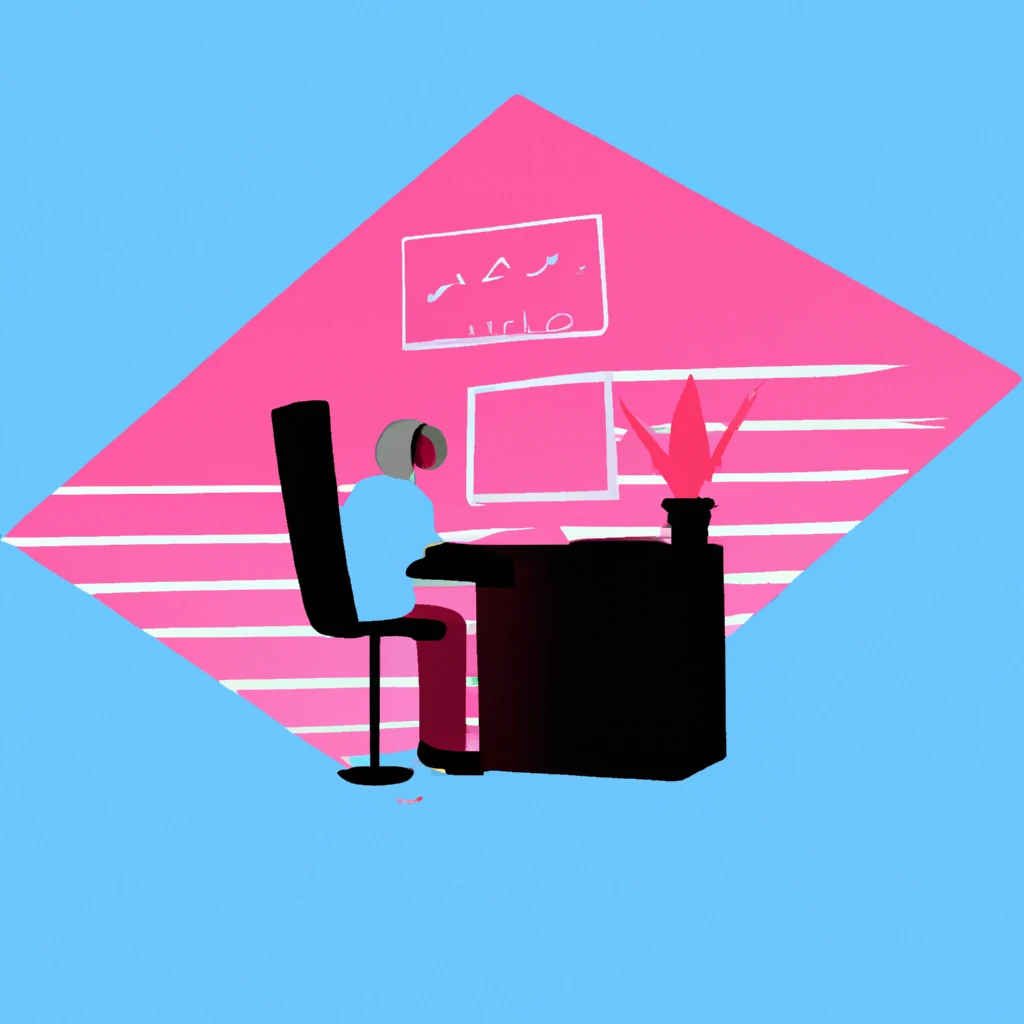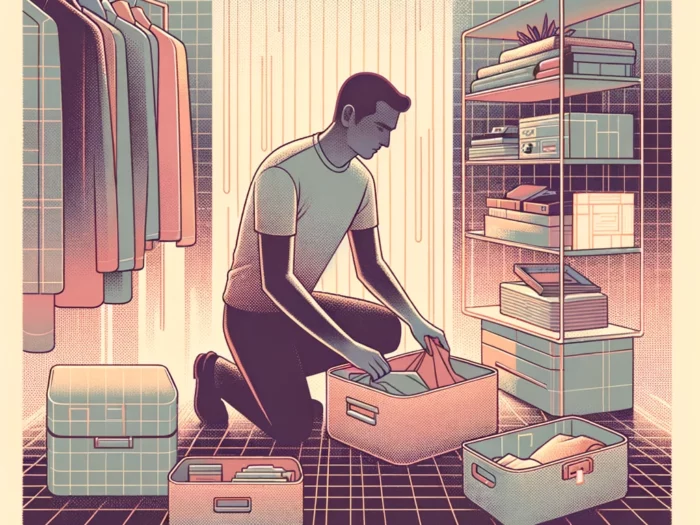- The Art of Letting Go: Embracing Minimalism in Your Work Life
- Finding Balance: Prioritizing Health and Well-being in the Present
- The Power of Simplicity: Simplifying Work to Improve Focus and Productivity
- Work-Life Integration: Blurring the Lines for a Healthier Lifestyle
- Designing a Purposeful Work Life: Aligning Work with Personal Values
- Creating Rituals for Productivity: Incorporating Minimalist Routines into Your Workday
- Finding Purpose in Your Work: Discovering Meaning in Minimalism
The Art of Letting Go: Embracing Minimalism in Your Work Life
Embracing minimalism in your work life isn’t simply about decluttering your physical workspace. It envelops purging unnecessary commitments, focusing on what truly matters, and freeing yourself from the shackles of unending busyness.
The minimalist approach is about questioning the status quo, and asking ourselves, “Do I really need to engage in work that stretches me too thin?”
“The ability to simplify means to eliminate the unnecessary so that the necessary may speak.” – Hans Hofmann
First, let’s talk about commitments. We, as professionals, often feel the need to say ‘yes’ to every opportunity, thinking it’ll help us progress in our careers. However, in actuality, overcommitting dilutes our attention and hinders us from doing our best work. It’s essential to identify what we value the most, and invest our precious time and energy into it. Which leads to the next point: focusing on what truly matters.
Minimalism at work involves curbing the urge to multitask and instead committing to a singular task with all our brainpower. By shedding the surplus, we can increase our productivity, simplify our work, and, more importantly, improve our job satisfaction. Multitasking is basically the enemy of a minimalist worker.
And then comes the most crippling aspect of modern work culture—busyness. Are we confusing being busy with being productive? That’s certainly food for thought. But the truth is, being busy often means ricocheting between tasks, not having a moment of rest, and eventually burning out. That’s far from being productive!
Instead, let’s choose to unbusy ourselves and make room for rest, self-care, and creative thinking. Let’s rethink work from a minimalist perspective, and make room for what truly matters.
So, as we delve deeper into the art of letting go, we might ask, “But how can we start?”.
- Declutter your workspace: Start with your desk. Remove anything that isn’t assisting your work directly. Pare things down to the essentials.
- Streamline your tasks: Limit your to-do list to just a few most important tasks each day.
- Set Boundaries: Irrespective of whether you’re working in office or from home, it’s important to delineate your work and personal space and time.
- Quality over quantity: Focus on doing one task exceptionally well, instead of delivering mediocre results across multiple tasks.
- Offload Mental Load: Automate, delegate, or say no to tasks that compromise your wellbeing and productivity.
The beauty of minimalism at work lies in the freedom it confers—the freedom to make purposeful choices, to create space for innovation, and to lead a more harmonious, healthier work life.
Finding Balance: Prioritizing Health and Well-being in the Present
How often have you stopped to consider whether your physical and emotional health are taking a backseat in your pursuit of professional success? More often than not, we get so caught up in the hustle and bustle of our careers that we underestimate the impact of stress on our overall well-being.
As a minimalist, I learned an invaluable lesson: simplicity is not just about decluttering your physical space; it’s about creating a healthier, more fulfilling reality. One where well-being isn’t sacrificed on the altar of ambition. And I can’t emphasize enough how adopting this stance has helped me regain my balance and live more presently.
Think about it. Living in the present means consciously choosing to focus on the here and now, to savor the moment rather than fretting about the past or anxiously awaiting the future. Applying this principle to your work life means learning to manage your tasks without overwhelming yourself or compromising your health. But how do you make that shift? What does it look like practically?
“Truth is ever to be found in the simplicity, and not in the multiplicity and confusion of things.” – Isaac Newton
1. Set Clear Boundaries
The first step towards a healthier work life is setting clear boundaries. In this digital age, it’s easy to always be ‘on,’ always accessible, always trying to squeeze in one more email or complete one more task. But at what cost? Try setting specific working hours and sticking to them. Just as important, ensure you set aside ample time for relaxation and recreation. This balance is the cornerstone of a healthy minimalist work life.
2. Mindfulness Matters
Then there’s mindfulness, a concept rudimentary yet profound. Mindfulness is the practice of being fully engaged in the present moment, paying attention to your thoughts, feelings, and surroundings without judgment. This practice has been scientifically proven to decrease stress, increase focus and promote overall well-being. Incorporating mindfulness exercises into your daily routine is a powerful way to combat work-related stress and maintain your mental and physical health.
3. Take Care of Your Physical Health
Working long hours sitting in front of a computer screen or in never-ending meetings can wreak havoc on your physical health. Make it a point to incorporate regular exercise into your schedule, eat balanced meals, and ensure you’re getting enough sleep. Your health isn’t expendable; treat it with the respect it deserves.
Living and working in the present as a minimalist doesn’t mean life becomes black and white, far from it. It means intentionally choosing simplicity to embrace a life and career that holds meaning and purpose. The joy of being present in each moment, renewing the mind and body, and recognizing that work is but one facet of life—is there anything more fulfilling than that?
The Power of Simplicity: Simplifying Work to Improve Focus and Productivity
Have you ever thought about the clutter in your workspace? The sheer amount of tasks, projects, and connections in your line of sight? Let me share something that made a substantial impact on my journey towards simplicity. I came across a profound concept: the power of simplicity in work. I found it in a Project 33 article, a minimalist fashion challenge inviting people to dress with 33 items or less for 3 months. I wondered, could I apply the same principles to my work life? And indeed, doing so revolutionized my productivity and focus.
The principle of “less is more” is not a novel one. But applying it actively to your work life can yield impressive results. If we filter our tasks, duties, and work relationships to the essentials, we can ensure that only meaningful and significant elements occupy our mental space. Isn’t it exciting to think of the clarity and heightened focus this could bring? Start with Simplifying Work Tasks
Let’s get into the details. How can we give structure to this minimalist thinking in our work life? For starters, take a hard, discerning look at your work tasks. Are they all necessary? Are there tasks that could be delegated, automated or eliminated? The idea is to keep only those roles that truly fall under your scope of expertise and contribute to your core goals.
4. Begin the Journey Towards Elimination and Automation
After identifying your core tasks, it’s time to reassess the remaining ones. Can some be automated? There are numerous digital tools available that reduce manual work. From email automation to project management apps, take advantage of technology to lighten your load.
Another option is delegation. Tasks not within your potential could be executed more efficiently by others. This not only lightens your load but also optimizes team efficiency. Remember, it’s not about hoarding work but about maximizing productivity and focus.
5. Implement a Simple Task Management System
My mantra is: ‘Plan your work and work your plan’. An effective task management system is crucial. Whether it’s a bullet journal or a digital tool like Trello or Asana, choose a system that suits you.
Respect your future self by organizing tasks according to priority and deadline. Then tackle them one at a time. As Zen Habits puts it, “single-tasking is the new multitasking”. You’ll notice a drastic increase in productivity and reduction in stress.
In simplifying work according to these principles, I experienced a fresh wave of productivity, enhanced focus, and a more profound enjoyment in work. In essence, simplifying work is not about shedding responsibilities recklessly, but prudently making space for actions that yield meaningful impact. So, are you ready for this transformative journey towards simplicity in work?
Work-Life Integration: Blurring the Lines for a Healthier Lifestyle
Imagine if work and life didn’t have to be separate entities, if they didn’t have to be at odds with each other. Imagine instead that they could coexist harmoniously, complementing each other rather than competing. This vision isn’t just some utopian fantasy—it’s work-life integration, and it might just be the change you need to live healthier, happier and more fulfilled.
Work-life integration is a holistic approach where work and personal life are intertwined, blurring the traditional “9 to 5” boundaries. It might sound daunting at first, but it’s not about working more, it’s about working differently, incorporating work into your life in a healthy and balanced way. So how do we make it happen?
6. Be Flexible with Your Time
One of the crucial elements to integrating work and life is flexibility. Does every task need to be completed between 9AM and 5PM? Likely not. By flexing your working hours around your personal commitments, interests and peak energy periods, you may find that work seamlessly weaves into your life.
7. Build a Supportive Community
Another key aspect is establishing a supportive community, both at work and at home. Employers, colleagues, family and friends can all contribute to the success of this new approach. Seek out those who understand and respect your vision, and you will find the transformation becomes less of a challenge.
8. Focus on Results, Not Hours
In work-life integration, the aim is not to maximize hours spent working but to optimize the output of those hours. Quality over quantity, remember? The impact of your work is far more important than the amount of time you’ve spent at your desk.
Of course, shifting from a work-life balance to a work-life integration mindset isn’t easy. After all, old habits die hard. But with a little determination, patience, and the right strategy, it’s completely achievable. Moreover, the potential benefits – improved health, wellbeing, and a sense of feeling more present in all aspects of your life – are surely worth the effort.
Are you ready to rethink your work patterns and blend your work and life for a healthier existence? Only you can answer that. But remember, a more fulfilling work life is not just a dream. It’s a choice that starts with a single step. And you’ve already taken the first step, haven’t you?
Designing a Purposeful Work Life: Aligning Work with Personal Values
Ever considered what if the professional work you do every single day wasn’t just about making ends-meet but was actually deeply aligned with who you are and what you value in life? Welcome to the concept of designing a purposeful work life, where work isn’t merely a necessary evil, but a platform that mirrors your personal values and drives your sense of fulfillment. I believe that consciously incorporating this can bring a sense of enrichment that’s missing from many modern workplaces.
Let’s break it down:
- First, you need to get clear on what your core values are. Are you driven by creativity, compassion, justice, or, perhaps, a love for nature and sustainability? Don’t know where to start? I recommend tools like The Barrett Values Centre Personal Values Assessment, which provides a comprehensive inventory of values and might just spark an “A-ha!” moment.
- Next, take a long, hard look at your current role. Does your job align with your personal values? Chasing goals that fall outside of these values can lead to burnout, dissatisfaction, and can even impact your mental health negatively. Remember to be honest with yourself during this step. Don’t be afraid to admit if there is a mismatch.
- Finally, if you see gaps, it’s time to strategize on how you can build a bridge between your work life and your personal values. This could mean advocating for change within your current organization. Perhaps you begin a new initiative that better aligns your company towards sustainability or social equity. Or it could mean seeking a new career path in a field that allows you to live out your values daily.
I’ve seen firsthand how aligning your work with your personal values creates a more meaningful work-life. It’s like seeing in color for the first time! Suddenly, it becomes clearer why certain roles have chafed you while others have invigorated you.
At the end of the day, the goal is to live a life of intention, both at home and at work. This isn’t just about rethinking work—it’s about redesigning our lives around work that serves our goals, fulfills our passions, and reflects our values. We deserve nothing less.
Embracing Change: Breaking Free from Old Patterns
Change can be daunting. Many of us resist it and prefer the comfort of habitual routines and known outcomes, even if these aren’t fulfilling to you. And isn’t that worth a little discomfort?
Creating Rituals for Productivity: Incorporating Minimalist Routines into Your Workday
In the pursuit of a minimalist work life, establishing productive yet simple routines form the bedrock of success. The beauty of adopting minimalist routines lies in their inherent simplicity — their power comes not from complex mechanisms, but from the clarity and focus they bring. But how exactly do we build such routines, and more importantly, how do we make them stick? Allow me to guide you through this transformative journey.
The first step is always recognition. What tasks, habits, or rituals currently constitute your workday? Are they essential? Do they contribute positively towards your goals? More often than not, you’ll discover that your days are filled with non-essential tasks. I call this ‘clutter’. Whether it’s incessantly checking emails or attending meetings that could’ve been an email, clutter is the enemy of minimalism.
9. Declutter Your Workday
Start by conducting a thorough audit of your workday. Jot down everything you do, however mundane it may seem. Afterward, scrutinize each item on your list. Ask yourself, ‘Is this necessary?’ or ‘Does this contribute towards my goals?’ Be ruthlessly honest with yourself. This process isn’t about judgement, it’s about making a conscious choice to align your actions with your vision.
10. Establish Core Rituals
Now that you’ve decluttered your workday, the next step is to determine your core rituals. These are the essential habits that will act as the foundation of your workday. They might be as simple as starting the day with a morning walk or ending it with reflecting on what you accomplished. The key here is that these rituals should feel effortless and natural to you.
11. Maintain Consistency
Consistency is the glue that binds your minimalist routines together. Incorporate small, achievable tasks in your routine, and gradually build up from there. If one day, you find yourself falling back into old habits, don’t beat yourself up. Remember, this is a journey, not a destination. The destination is a balanced, healthier work life. Always be gentle with yourself during this transition.
This minimalist journey, though personal, can resonate with each one of us in some form or the other. I found my purpose through living a simpler, more focused work life. The decluttering process was more of a revelation for me rather than a challenge. Isn’t it thrilling how deep insights can emerge from simple acts of self-awareness?
One thing I learned through my journey into minimalism is that no change is too small. Tiny steps snowball into significant transformations. As the saying goes, Rome wasn’t built in a day. Give yourself the time and patience to walk this path at your own pace. Embrace the process. And remember, minimalism at work isn’t about removing joy from your work. Quite the opposite, it’s about making space for what brings you true happiness.
Finding Purpose in Your Work: Discovering Meaning in Minimalism
Minimalism isn’t just about less clutter – it’s about more purpose. When you pare down to only the essentials, you make space in your life for what really matters. And there is nowhere this becomes truer than in the work we do. So, how can we, as minimalists, find purpose in our work and imbue our lives with more meaning?
For many of us, work isn’t just a paycheck. It’s an opportunity to make a difference, to contribute to something larger than ourselves. It’s how we create value, how we leave our mark on the world. At its best, work can be a source of deep personal fulfillment and joy.
But only if we approach it in the right way. And, luckily for us, the minimalist ethic provides us with the perfect set of principles to guide us on this quest.
Minimalism in work means cutting out the unnecessary to focus on the meaningful.
12. Identify Your Passions
Figure out what truly drives and inspires you. Make a list of your passions and interests, and then evaluate your work in their light. Do your work tasks align with these passions? Is there way can pursue a you your interests in the context of your work? If not, is there a career that might allow you to do so?
13. Set Meaningful Goals
Once you’ve identified what you’re passionate about, set concrete and tangible goals that reflect these passions. Wanting to make a difference is great, but it needs to translate into achievable work objectives for it to have a real impact. Your goals should be fueled by your passions, making your tasks feel less like mandatory chores and more like a journey towards self-fulfillment.
14. Cultivate Deep Work
Author Cal Newport, in his book, Deep Work: Rules for Focused Success in A Distracted World, posits that the ability to drown out distractions and focus single-mindedly on a complex task pays huge dividends and makes work more satisfying. Minimalism plays directly into this. Avoid multitasking, and give yourself permission to delve deeply into your work. The satisfaction derived from producing high-quality work can fill your life with purpose.
15. Reflect Regularly
A regular self-reflection protocol can play a crucial role in aligning your work to your minimalist ethos and sense of purpose. Take time to reflect on your progress towards your goals, ask yourself whether you are staying true to your defined values, and make necessary adjustments. This practice helps create a sense of control and ensures that you’re not just going through the motions but rather steering your work-life path proactively.
Finding purpose in your work won’t happen overnight – it’s a journey, not a destination. But by taking the principles of minimalism to heart and applying them to your work, you’ll find that the process becomes not only simpler, but also richer and more rewarding.
In conclusion, minimalism and work may, at first glance, seem like an improbable pair. But delve deeper, strip away the excess, and you’ll find a working philosophy that not only enhances productivity and well-being but also enriches lives with intentionality and purpose.









